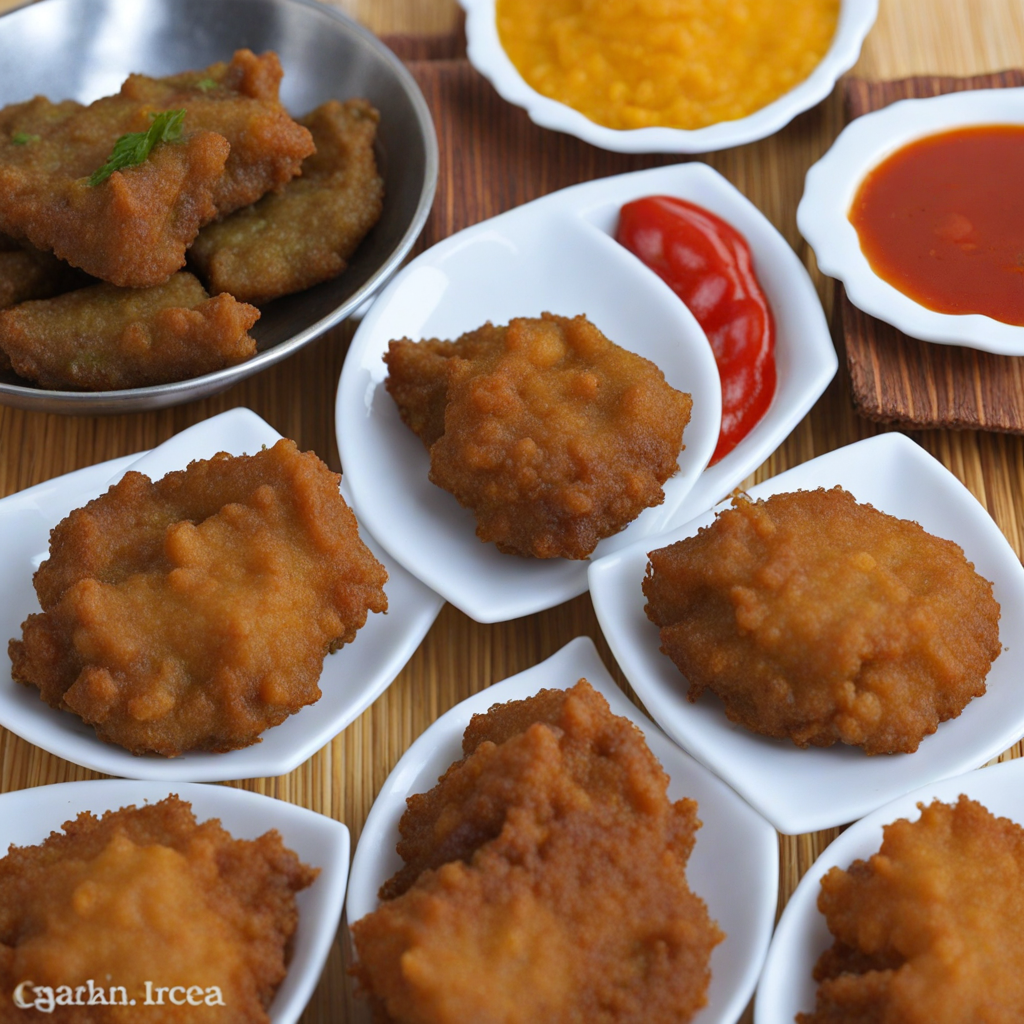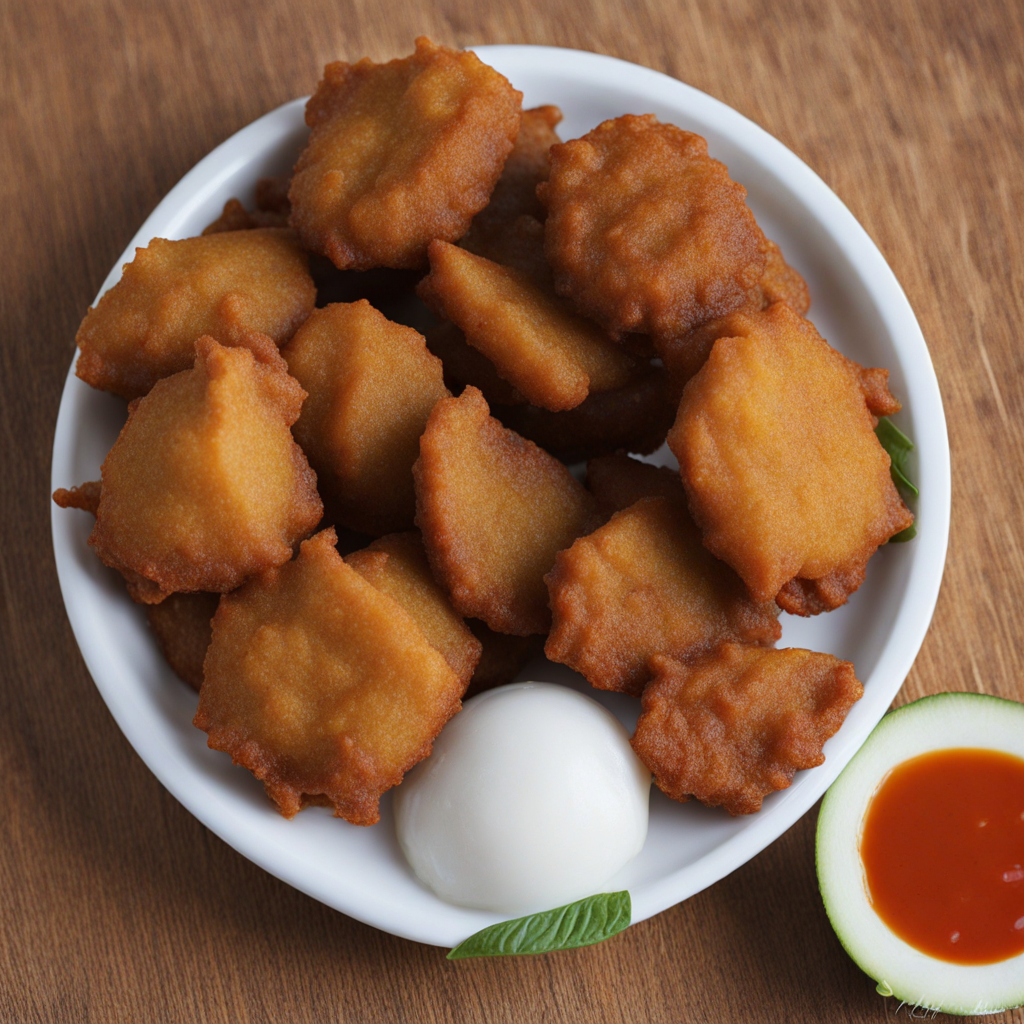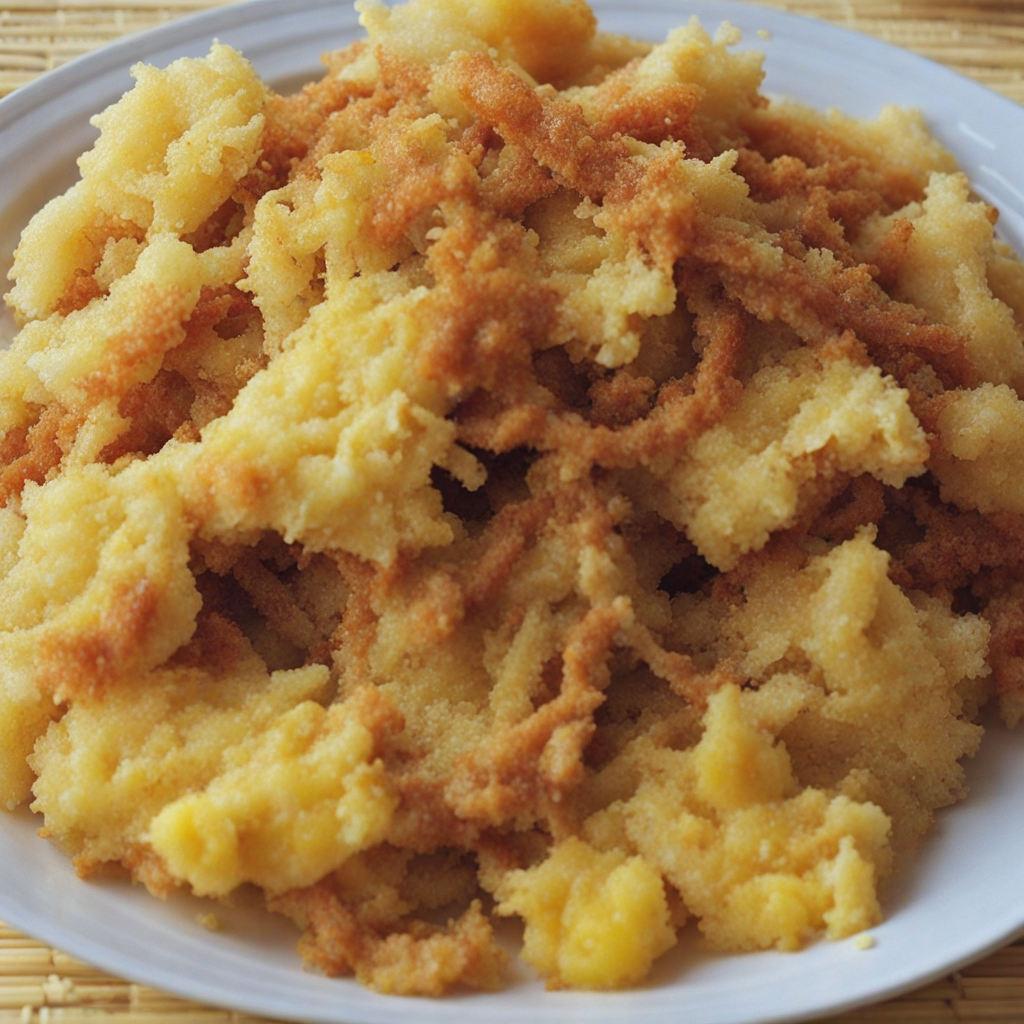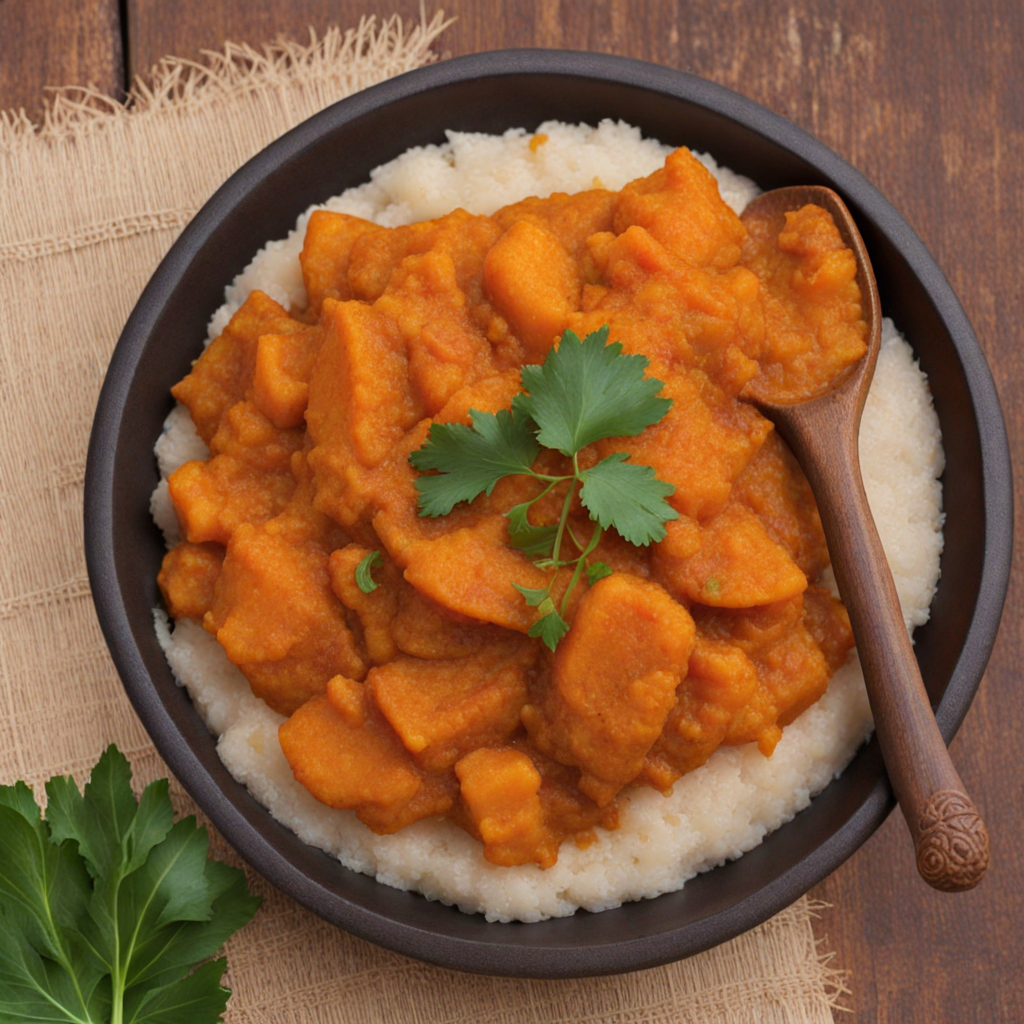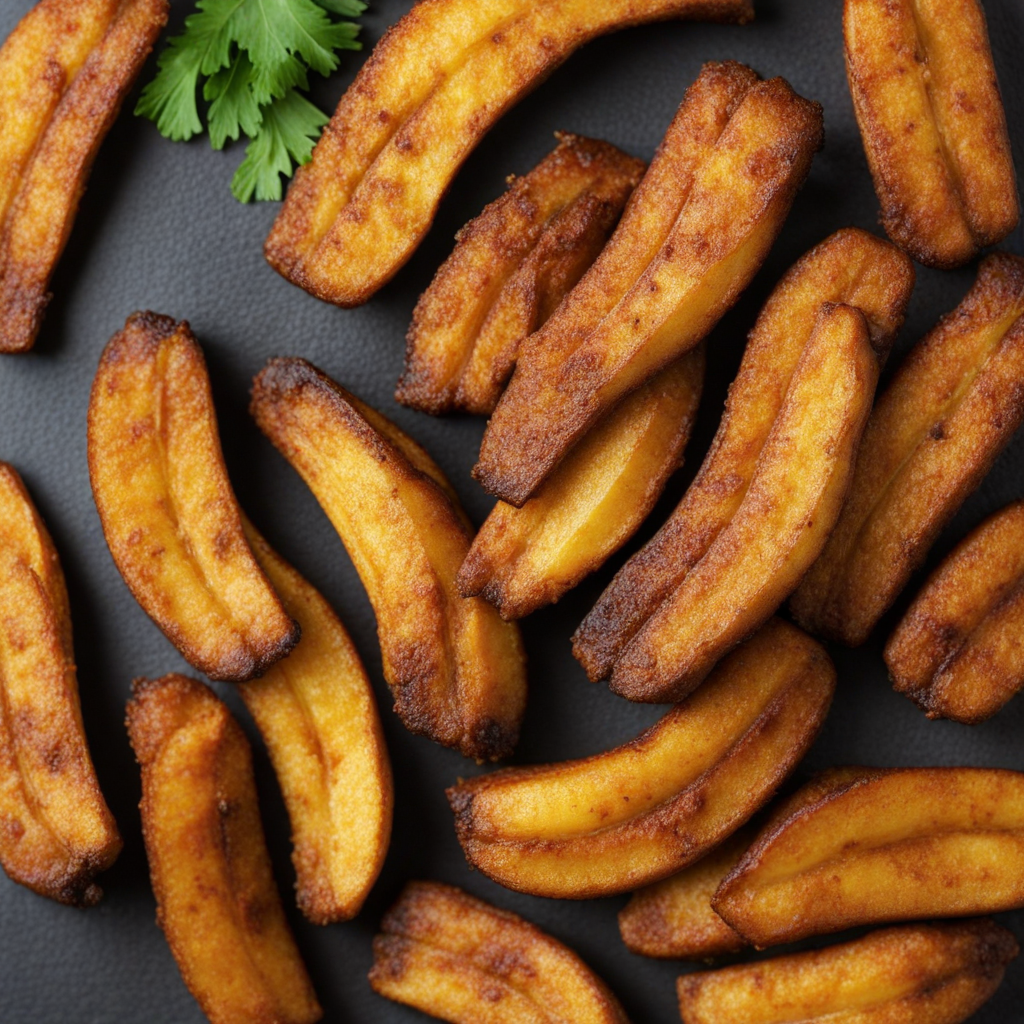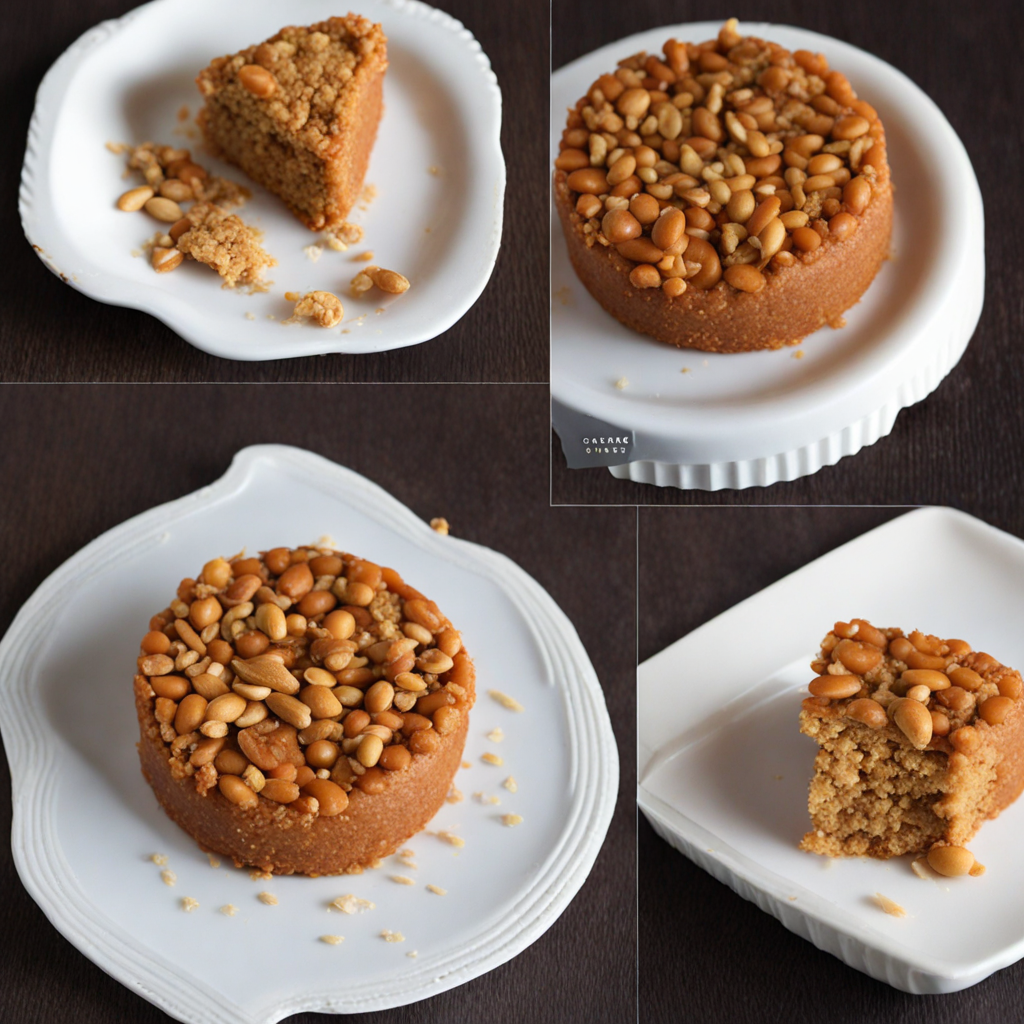Koose
Koose, also known as 'akara' in other West African cultures, is a popular street food in Ghana that captivates the palate with its unique blend of flavors and textures. This delightful dish is made from black-eyed peas that are soaked, blended, and seasoned with spices, creating a smooth yet slightly coarse batter. The addition of ingredients like onions and peppers gives Koose its distinct, savory profile, while a pinch of salt enhances its overall flavor, making each bite irresistibly tasty. The batter is then shaped into small balls or patties and deep-fried to perfection, resulting in a crispy exterior that contrasts beautifully with its soft, fluffy interior. The aroma of Koose wafting through the streets is enough to catch the attention of passersby, drawing them in for a taste of this beloved snack. Served hot, these golden-brown fritters are often enjoyed as a breakfast item or a midday snack, frequently accompanied by a spicy pepper sauce or a refreshing salad. The combination of heat from the sauce and the rich, buttery flavor of the fried beans creates an explosion of taste that is both comforting and exciting. Koose is not just food; it's a social experience, often shared among friends and family, reflecting the communal spirit of Ghanaian culture. In addition to its deliciousness, Koose is also a nutritious option, rich in protein and fiber, making it a wholesome addition to any diet. Its versatility allows it to be paired with various sides, from rice to plantains, or simply enjoyed on its own. Whether you are a culinary adventurer eager to explore new flavors or someone seeking a hearty snack, Koose offers a delightful taste of Ghana that is sure to leave a lasting impression.
How It Became This Dish
The History of Koose: A Culinary Treasure from Ghana #### Origins Koose, also known as "Kose" or "Akara," is a savory snack that holds a cherished place in Ghanaian cuisine. This delectable dish is made primarily from black-eyed peas or cowpeas, which are soaked, blended into a smooth paste, and deep-fried until golden brown. The origins of Koose can be traced back to the broader West African culinary traditions, where legumes play a vital role in the diet. The dish is believed to have roots in the ancient practices of harvesting and processing beans, a staple food source in many African cultures. The name "Koose" is derived from the Akan language, predominantly spoken in southern Ghana, which reflects the dish's deep integration into the local culture. The preparation of Koose varies slightly from region to region, with some variations incorporating spices, onions, or even vegetables, showcasing the diversity of Ghana's culinary landscape. #### Cultural Significance Koose is more than just a snack; it embodies the essence of communal eating and the rich traditions of Ghanaian hospitality. It is often enjoyed as a breakfast food, served alongside porridge or as a snack throughout the day. In many communities, Koose is a staple at social gatherings, including celebrations, festivals, and family reunions. Its presence at these events underscores its role as a symbol of togetherness and sharing. In Ghana, food is deeply tied to identity and heritage. Koose, with its simple ingredients and preparation method, reflects the resourcefulness of the people. Traditionally, the dish is often sold by street vendors, who set up stalls in bustling markets and busy intersections. The aroma of frying Koose wafts through the air, drawing people in and creating a sense of nostalgia and community. The act of buying Koose from a vendor is not just about satisfying hunger; it is an experience steeped in cultural exchange, where stories are shared, and relationships are built. #### Development Over Time As with many traditional dishes, the preparation and consumption of Koose have evolved over time while maintaining its core essence. The introduction of modern cooking techniques and ingredients has influenced how Koose is made today. While the traditional method of soaking and grinding beans remains popular, many home cooks and vendors now utilize blenders, making the process quicker and more efficient. This shift has allowed for greater accessibility, enabling more people to enjoy this beloved dish. Additionally, the global interest in plant-based diets and vegetarian cuisine has brought renewed attention to Koose. As people around the world become more health-conscious, the high protein content of black-eyed peas and their nutritional benefits have positioned Koose as a desirable alternative to meat-based snacks. The dish's adaptability has also led to creative variations, with some chefs experimenting with different spices and ingredients, such as adding sweet peppers or herbs to the batter. The globalization of food culture has allowed Koose to transcend its traditional boundaries. While it remains a staple in Ghana, it has found a place in the diaspora, with Ghanaians and other West Africans introducing it to new audiences in various parts of the world. Food festivals, cultural showcases, and restaurants specializing in West African cuisine have helped to elevate Koose's status beyond its regional origins, making it a culinary ambassador for Ghana. #### Koose in the Contemporary Scene Today, Koose is celebrated not only in homes and on the streets of Ghana but also in international restaurants and food markets. The dish exemplifies the fusion of tradition and modernity, as chefs experiment with different flavor profiles while respecting its heritage. Social media platforms have played a pivotal role in popularizing Koose, with food enthusiasts sharing recipes, cooking videos, and experiences that highlight this iconic dish. Moreover, the increasing recognition of African cuisines on the global culinary stage has contributed to a resurgence of interest in traditional dishes like Koose. Cookbooks, cooking shows, and culinary blogs dedicated to African food have further propelled Koose into the limelight, inviting people from diverse backgrounds to explore its flavors and cultural significance. #### Conclusion The history of Koose is a testament to the resilience and adaptability of Ghanaian culinary traditions. From its humble origins as a simple snack made from local legumes to its current status as a beloved dish enjoyed by many, Koose encapsulates the spirit of Ghanaian culture—community, hospitality, and creativity. It serves as a reminder of the importance of food as a cultural artifact, bridging generations and fostering connections among people. As Koose continues to evolve, it remains a delicious representation of Ghana's rich culinary heritage, inviting both locals and global citizens to savor its flavors and share in its story. Whether enjoyed at a bustling market, a family gathering, or a trendy restaurant, Koose is not just food; it is a celebration of tradition, identity, and the joy of coming together over a shared meal.
You may like
Discover local flavors from Ghana


